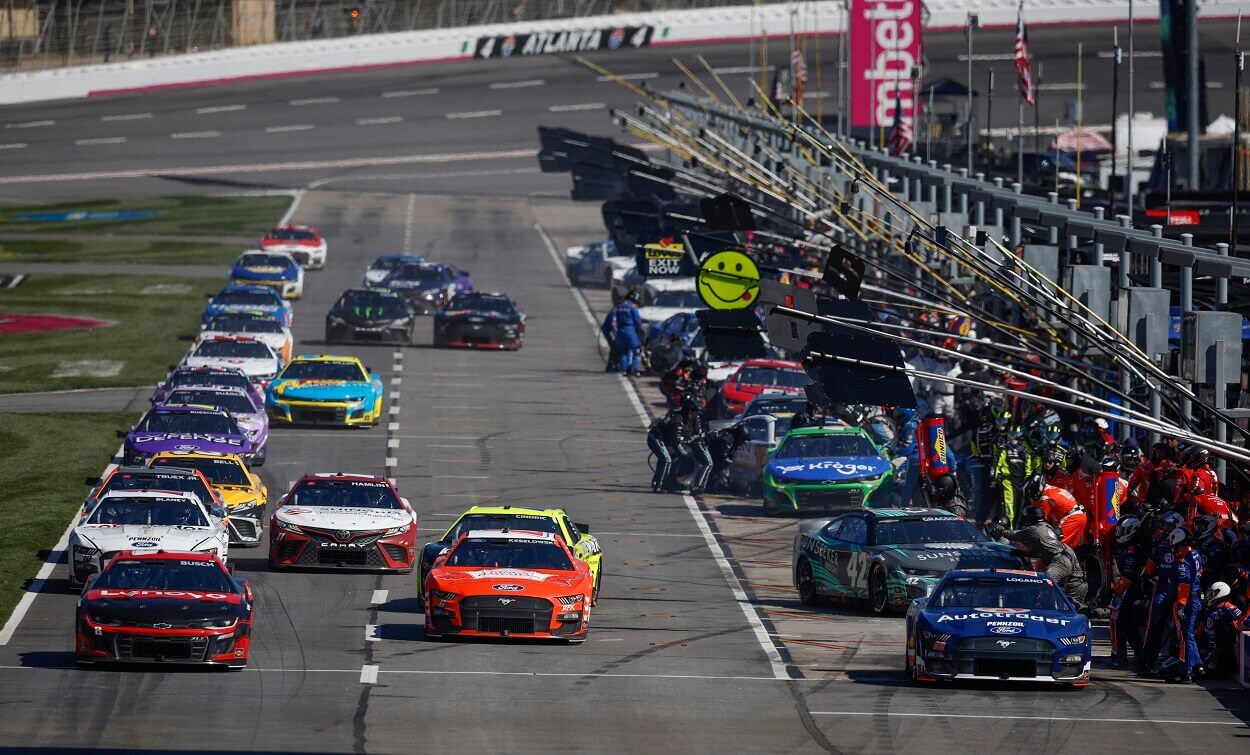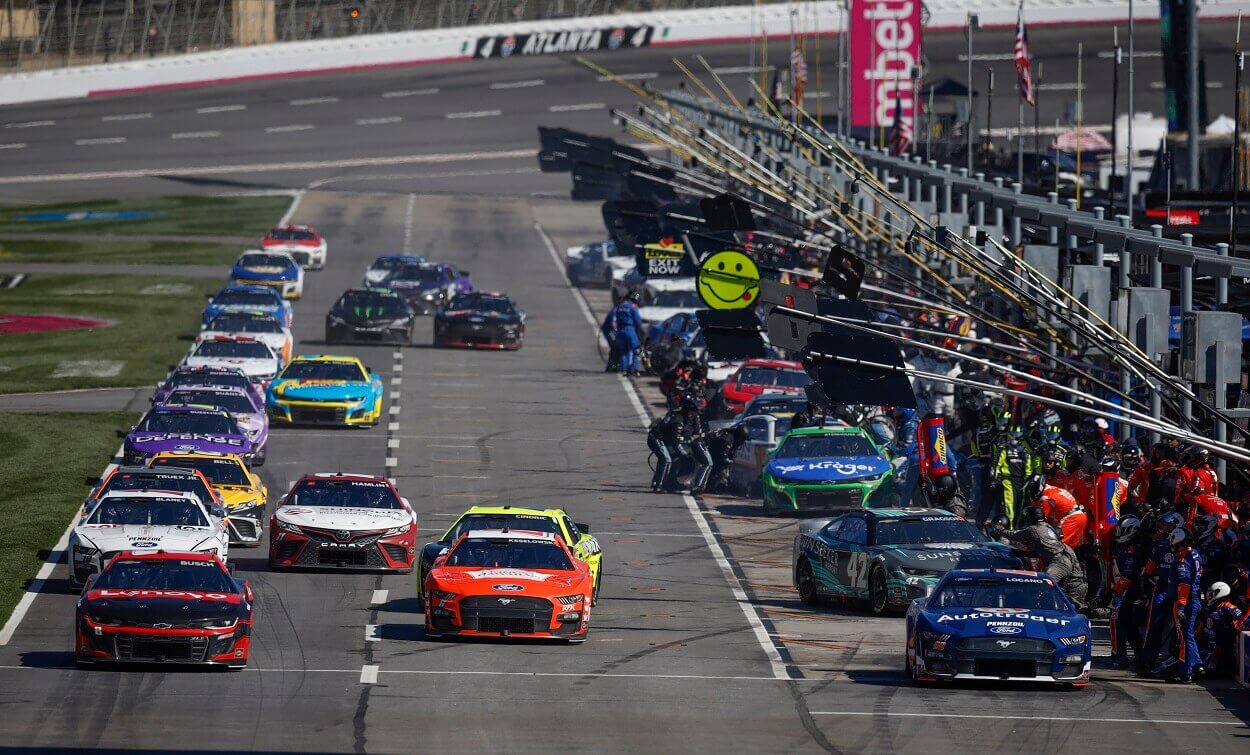NASCAR
NASCAR Needs to Address the Mistake That Was Made at Atlanta Motor Speedway Before It’s Too Late

One year after a massive reconfiguration changed the style of racing forever at Atlanta Motor Speedway, the track added a new wrinkle for the 2023 season in the name of safety. But that wrinkle created several unintended challenges, including the possibility of a more severe crash.
Track owner Speedway Motorsports Inc. turned the 1.54-mile speedway from a traditional intermediate track in 2021 into a facility that allows for pack racing similar to superspeedways such as Daytona International Speedway and Talladega Superspeedway.
The complexion of the NASCAR races at the track changed drastically. The entire field is now able to run in one large group, which created some potentially unsafe moments when drivers peeled off the track at the exit of Turn 4 to get to pit road. The distance between Turn 4 and pit road at Daytona and Talladega is long enough that drivers have a chance to move to the apron of the track long before they have to be at the pit road speed limit.
That transition space does not exist at Atlanta, which is approximately one mile shorter than the two superspeedway facilities. Drivers who slow down to enter pit road at Atlanta risked stacking up the entire pack and creating a large wreck.
Atlanta Motor Speedway moved its entrance to pit road nearly to the backstretch
The speedway attempted to rectify the situation for the 2023 season when it moved the entrance of pit road all the way around to the backstretch at the entrance of Turn 3. Drivers now have to meet the pit road speed limit long before their pit stalls and regulate their speed while navigating turns 3 and 4 on what used to be the apron of the race track.
NASCAR and Atlanta Motor Speedway made it through the inaugural weekend without incident, but the new pit-road layout leaves substantial room for problems.
Drivers might no longer risk wrecking the field by pulling off the track too late in Turn 4, but a wreck on that side of the race track could potentially be even more dangerous if cars careen upward of 180 mph and hit a car that is moving at the 45 mph speed limit of pit road because no barrier exists between the racing surface and what is now considered pit road. The speed difference could be devastating if a car at race speed hits another that is essentially standing still in comparison.
The other major issue with the new Atlanta pit road is one of competition. Drivers who make green-flag pit stops fall two laps behind the leaders because it takes so long to drive more than halfway around the track at pit-road speed. A driver who is penalized after the stop, as Ryan Blaney was because he sped through a segment of pit road, falls an additional two laps behind.
Blaney was remarkably able to rebound from the penalty thanks to a stage break and two more cautions that gave him a chance to manipulate his track position by staying out for wavearounds since tire falloff was negligible because of the new racing surface.
However, those opportunities are unlikely to present themselves often in future races at Atlanta, which means drivers will be effectively eliminated from contention if they have a pit road penalty. Even a caution that interrupts a standard green-flag pit cycle would give a massive advantage to drivers that had yet to pit.
Typically, drivers who pit before a caution comes out get trapped one lap down from the leaders that stayed on track. The drivers who first pitted are then able to cycle back onto the lead lap when the rest of the field pits under caution. That system provides some sense of fairness, so a race is not determined solely by when a team decides to have its driver make a pit stop.
NASCAR and the speedway escaped the Cup Series race without safety and competition issues but might not be so lucky going forward

March’s Cup Series race luckily did not have a caution during the one round of green-flag pit stops, but one in a future race would potentially leave only a few drivers on the lead lap for the remainder of the race.
The entire last half of the race could have been run with only a few drivers on the lead lap had that happened in Sunday’s event because the drivers who pitted early would have only been able to get one of their laps back with a wavearound.
As with many things in NASCAR, one change brings about several unintended consequences. Thankfully, one of the potentially significant setbacks happened in the first race with the new Atlanta pit road. But NASCAR and the speedway should revert to the old pit road or find some other compromise before the significant length of pit road becomes the determining factor in who wins a future race at Atlanta Motor Speedway.











